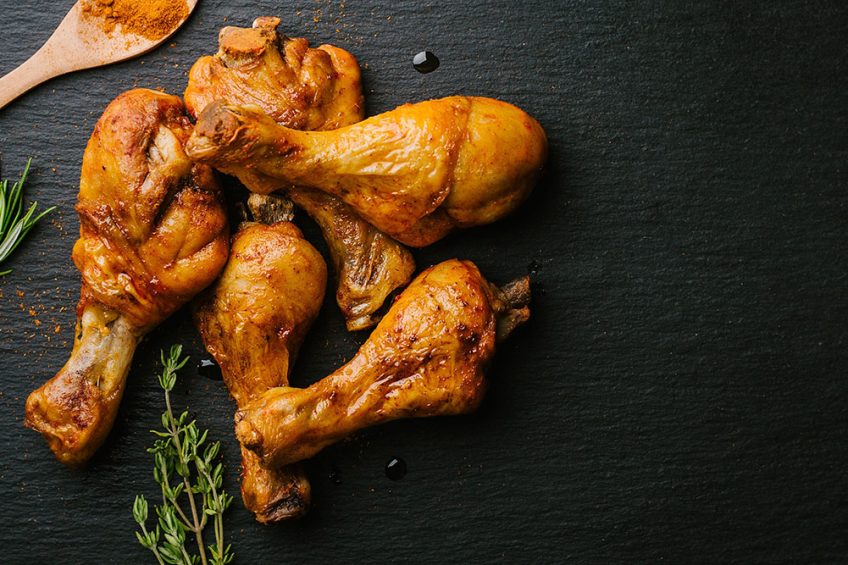Growth in Argentina’s poultry industry restricted

Argentina will see a slight rise in chicken meat production and exports in 2021 due to increased demand and a return to economic growth nationally and globally.
2020 chicken meat production is forecast at 2.195 mmt, a 0.87% increase from 2018. Due to the Covid-19 pandemic, large poultry companies have altered their operations so that plants can operate with 20% fewer personnel at any time, while still maintaining production. The industry could reportedly produce up to 10% more chicken meat on the current production base if needed. However, no major investments in capacity are planned. Nevertheless, chicken meat production in Argentina is expected to increase by 2% to 2.23 mmt because of higher domestic and export demand. Challenging macroeconomic conditions in Argentina and tight financing conditions for facility renovation and improvement will restrict this growth.
Poultry producer’s competitiveness undercut
In 2020, a robust corn and soybean harvest and increased export taxes on oilseeds have provided competitive benefits for Argentine poultry producers. Corn, wheat, and barley currently face export taxes of 12%, with the potential to rise to 15%. Soybeans are taxed at 33%. Even before other costs, like transportation and storage, Argentine farmers receive a price that is 12-33% lower than their competitors for any grain and oilseed bound for export. In this distorted market, poultry producers can still pay a discounted price if it is marginally better than the price offered by exporters and thus lower their feed costs substantially relative to producers in countries without such distortions.
Nevertheless, poultry exports face 9% export taxes, and high labour and electricity costs, as well as value-added taxes, continue to constrain profitability. These factors have undercut Argentine producers’ competitiveness relative to regional competitors and moderated export growth despite currency movements that should have bolstered exports, notes a USDA report.
 Poultry bones turned into green fuel
Poultry bones turned into green fuel
Brazilian researchers are looking into the possibility to turn poultry bone waste into a green biodiesel via hydrogenation.
Broilers are produced by a sector dominated by domestic, privately-held enterprises. More than 80% of the country’s chicken meat production is processed in 54 federally-inspected plants. The remaining volume is produced at 39 additional plants that are monitored and restricted by provincial authorities for domestic sale only, with a small amount of on-farm and backyard production. Commercial broilers are slaughtered at 49-51 days at a carcass weight of 2.2-2.4kg.
Chicken continues to grow in popularity
Poultry meat consumption for 2020 is forecast to 2.04 mmt, up almost 1% from 2019. Domestic chicken meat consumption in 2021 is forecast at 2.059 mmt (up 2%), increasing per capita consumption to 45.8kg (beef at 52.3kg; pork at 14.5kg; seafood at 7kg; and lamb at 1.5kg). The OECD predicts that Argentina will emerge from 3 years of recession in 2021 with a 3.5% growth in GDP. In addition to a rising population, a growing economy will spur increased demand for all food products, and chicken continues to grow in popularity. Whole broilers represent 70% of domestic chicken meat consumption, and it is reported that further processed value-added products, such as pre-cooked meals, frozen chicken meals, chicken nuggets and chicken burgers, represent market sector growth opportunities in the country.
 Popularity of poultry continues globally
Popularity of poultry continues globally
Global consumption peaked in 2019 and a continued upward consumption trend is expected, according to an IndexBox report.
Argentina’s chicken imports declining
Argentine chicken meat imports are forecast to decline from 5,000 mt (2020) to 4,000 mt (2021), with the top 3 imported poultry products being frozen chicken cuts, prepared chicken products, and prepared turkey products. As imports of turkey have fallen substantially since 2019, overall poultry imports will be only slightly higher. Since 2001, imports have represented less than 1% of the total supply of Argentine poultry meat and the continuing economic difficulties in the country have reduced demand further. The depreciation of the Argentine peso has also made imports less attractive. From 2002 to 2019, Brazil held an average of 94% of total poultry meat imports (6,000 mt per year). Chicken meat from Brazil, Uruguay, and Paraguay enters Argentina tariff-free as a Mercosur pact member while other exporters face external Mercosur tariffs of 10-16%.
Exports to China, South Africa, Chile and Russia
2020 exports are expected to hold steady at 155,000 mt with Argentina’s top markets in 2019 and for the first half of 2020 being China, South Africa, Chile, and Russia. Argentine exports of chicken meat are projected to increase by 1.9% to 175,000 mt in 2021. Over the last 3 years, exports have averaged 65% chicken cuts, 34% whole bird, and 1% prepared products. China remains the top target as increased demand is anticipated as part of post-Covid-19 economic recovery. The depreciation of the Argentine peso since August 2019 has improved the competitiveness of the export sector in global markets, however, frustrations exist with the slow pace of Free Trade Agreement negotiations, which have reportedly prevented Argentina from taking advantage of certain market opportunities.
 China audits Brazilian poultry processors online
China audits Brazilian poultry processors online
Brazilian poultry processors have high hopes of gaining market access to China after Chinese authorities carried out an online audit.
Movement of Argentine poultry meat
Industry officials are hoping to increase exports to the UK if post-Brexit trading rules make it more difficult for Polish and Dutch poultry producers to access the British market. Argentina looks to move more chicken meat in the western hemisphere since gaining market access to Mexico and Canada and growing demand in Chile.
The information in this article was extracted from a USDA GAINS report prepared by Benjamin Boroughs and Andrea Yankelevich.













